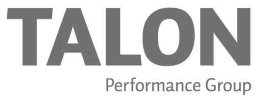Ronald Heifetz, the father of adaptive leadership, made the observation that organizations and their leaders “feel pressure to solve problems quickly, to move to action.” We live and work in a volatile, uncertain, complex and ambiguous world that demands our quick response. Additionally, our culture is driven by winning and achieving financial success. It is easy to see how we often find ourselves perpetually rushed and in a hurry to get to the next thing—there’s always something demanding our attention just around the corner.
The consequence of this constant going and doing is that we don’t stop and think. We get caught up in the action and rarely do we take a step back and examine our situation and diagnose where we are and what we need to focus on. This limits our ability to spend time on what matters most to us as leaders: driving better results in a fulfilling way.
There are common challenges that I have observed in my work with leaders across a variety of different industries. Overwhelmingly, three themes emerged: Leaders are frequently unclear on strategy, victims of the superhero syndrome, and drifting into isolation. Let me explain…
Unclear on Strategy
Don’t we all just love the word strategy? Corporate strategy. Strategic thinking. Strategic planning. Adding the word strategic to any topic adds gravitas. And it should. Strategic generally means differential importance. However, “strategy” and “strategic” have become so commonplace for most of us, that they have become void of meaning. As it turns out, most people in organizations are unclear what the strategy is. This is partly because the leaders themselves are unclear.
In many cases, there is a lack of alignment around strategy because there is no strategy. Or, if there is, it is understood by a select few leaders at the top of the organization. Most leaders I encounter desperately want to know what the strategy is—it would drastically improve their engagement and performance. Others have very little concern or are even apathetic to strategy because they haven’t seen it impact their role.
There is much to discuss and uncover amid the whirlwind of uncertainty when it comes to strategy. Suffice it to say that many people are unclear on the strategic direction of their organizations. And, the overwhelming feeling and perception is that the leaders at the top of the house are just as unclear.
The Superhero Syndrome
Leaders have unrealistic expectations for themselves—and other leaders. We (and by “we” I mean the collective majority in today’s society) expect our leaders to be superheroes. We each have a unique set of strengths, what some call our “super powers,” but we often fail to remember that we also have weak spots. We have constraints—we are not limitless.
When we are able to identify where we stop, it opens the possibility and clarifies where others start. We cannot rest in the false belief that leaders are capable of solving all problems at all times in the best way. We tend to set unrealistic expectations for our leaders—and in turn, for our organizations. And it doesn’t stop there. We are quick to say “yes, I can do that” to clients and prospects without stopping to think if we have the capability and resources to deliver on the promises we make. We fall into the trap of trying to become all things to all people. This inevitably leads to mediocre quality, disappointed customers, and compromised integrity.
Drifting into Isolation
The pressure for leaders to show up and prove their value comes with added pressure and responsibility. I have seen this lead to a tendency for many leaders to go rogue. We don’t want anyone to see our flaws or mistakes because, as leaders, we are more visible and we feel more vulnerable to scrutiny and judgment.
Emerging talent is given the okay to make mistakes. Trial and error is a part of the learning process on the way to becoming a leader. However, there is an unspoken assumption that plagues many of us: once you become a leader, learning ends and you are expected to have all of the answers. We often trap ourselves into thinking: I should be able to do whatever is asked of me. These are the very assumptions that begin to shut down our communication with others and drive us into isolation…and often into unnecessary failure. Over time, this cuts us off from learning, collective wisdom, and the very talent that we work so tirelessly to surround ourselves with, and we become susceptible to making even bigger mistakes.
We can each benefit from having our own “board of advisers”—others who help us check our thinking and assumptions and balance our behaviors and decisions. You’ve heard it said “it takes a village to raise a child.” The same goes for leaders—it takes a village to support and raise good leaders.
The challenges that I have outlined here are not mutually exclusive, and they tend to have a compounding effect on one another. Chances are, if you are struggling in any one of these areas, you are also struggling in others. Conversely, as you begin to improve in one area, you generally begin to see progress in the other areas as well.
As you kick off 2020, do you find yourself thinking about any one or all of these areas? Have you stopped to think how you might jump off the carousel of going and doing and invest in yourself to figure out how to navigate these challenges?
